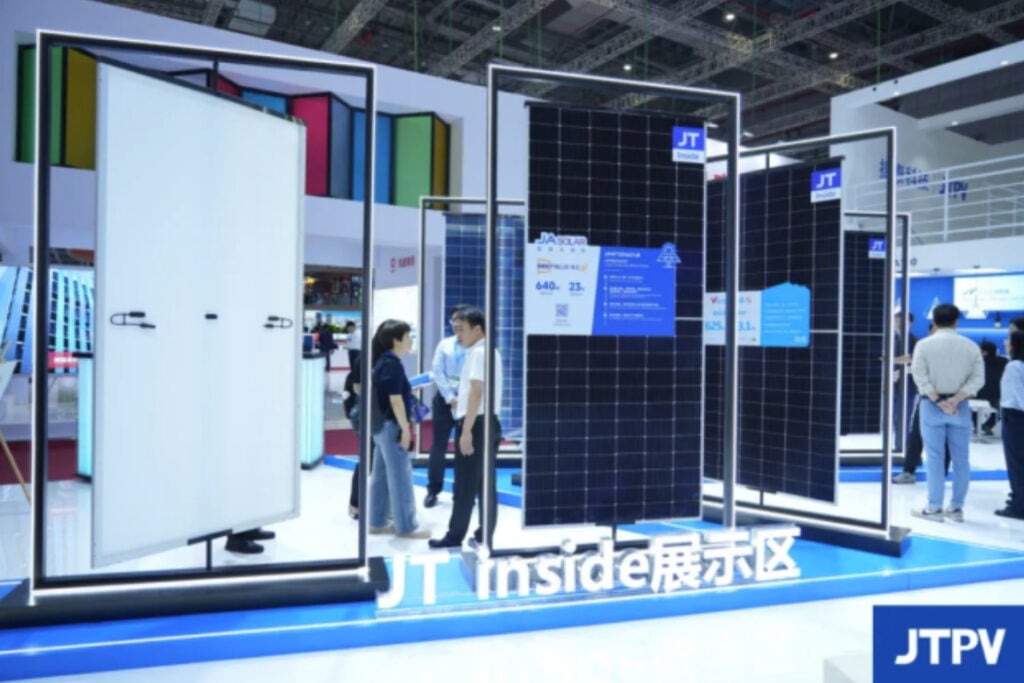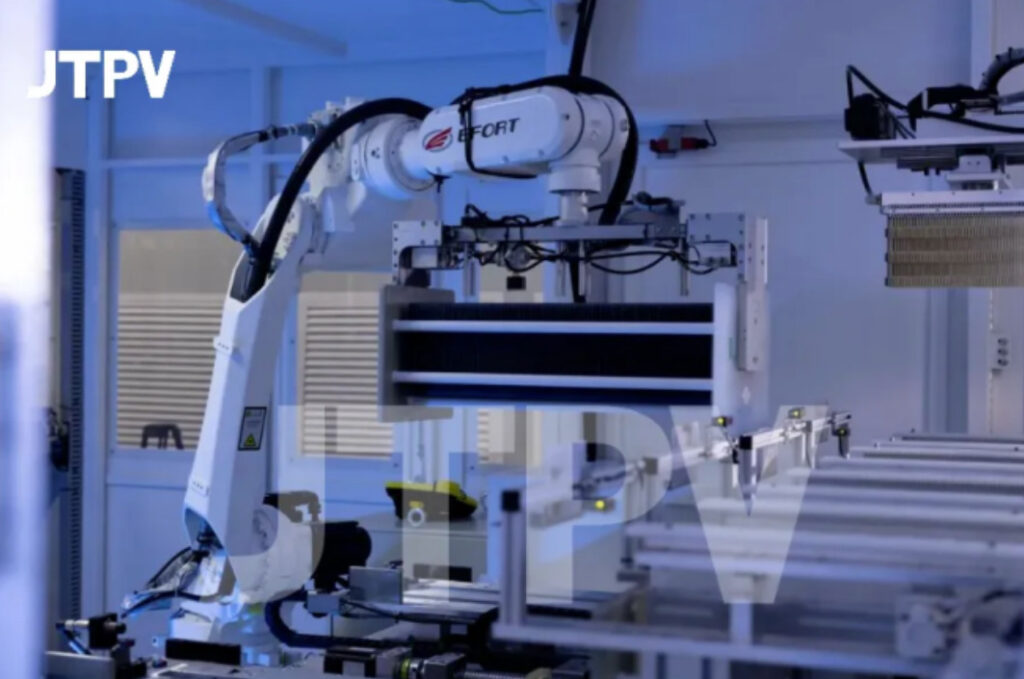
01 From scale growth to quality improvement in distributed power stations
In 2023, the global cumulative installed capacity of photovoltaics increased from 1.2 TW in 2022 to 1.6 TW. The newly installed capacity for PV systems rose from 407.3 GW to 446 GW, with the estimated global inventory of modules standing at approximately 150 GW.
In recent years, China’s PV industry has seen explosive growth, with the country’s cumulative grid-connected capacity reaching 608.91GW at the end of 2023, distributed PV accounting for 41.8%. In 2023, the C&I sector added 52.80GW, while the residential sector added 43.48GW. In the first quarter of 2024, newly installed PV capacity set a new record, reaching 45.74GW.
However, against the backdrop of the booming development of distributed PV, there are also hidden concerns, as more and more quality issues emerge.
Industry insiders commonly report power station failures, including hotspots, microcracks, PID effects, inverter overheating, rack corrosion and electrical system failures, with these issues not only affecting power generation efficiency but also potentially endangering power station safety.
Case Studies:
Case 1:
A commercial rooftop project, two years post-operation, discovered severe PID effects in a large number of modules, leading to 20% lower power generation than expected. The subsequent investigation revealed the use of low-quality cells that suffered rapid degradation in high-humidity environments.
Case 2:
A power station project in Liaocheng City, Shandong Province, China, promised to deliver an average annual power generation of no less than 24 million kWh over 25 years. However, the actual power generation did not meet the standard required, with a court ultimately ruling in favour of the plaintiff, awarding compensation of 70 million yuan for economic losses caused by project delays and substandard power generation.
Among the many issues, module product failure is one of the core reasons for the subpar investment return of a power station. In-depth analysis shows that the root cause of module failure often lies in the performance degradation or failure of cells. This failure not only directly affects the power generation efficiency of the module but may also lead to safety hazards such as hotspots, thereby affecting the performance and lifespan of the entire PV system.
Cell failure manifests itself in various forms, including efficiency degradation beyond that expected, microcracks, PID effects, hotspots caused by poor welding and various material defects. These issues may not be apparent in the early stages of plant operation but will gradually emerge and accumulate over time, ultimately leading to a significant deviation of actual power generation from expectations, directly affecting investor returns.
A typical case is a distributed project that used low-cost cells, with a degradation rate of 5% in the first year of operation, far exceeding the industry average of 2-3%. The project side calculated that, if this trend continued, the actual power generation after 25 years would be more than 30% lower than expected, severely affecting ROI.
According to a report by a third-party assessment agency, after excluding factors such as design and construction, more than half of plant performance issues can be traced back to cell quality problems.
Long overlooked as a component with little direct connection to end users of a power station, the importance of cells is now coming to the forefront. Cell quality directly affects key indicators such as initial conversion efficiency, annual seal damage, PID resistance, LID and temperature coefficient, these apparently technical terms ultimately translating into tangible power generation and economic benefits.
Empirical data shows that modules using high-quality N-type cells, under the same conditions, achieve an approximate comprehensive gain of about 0.2% in low-light power generation compared to P-type. This is not only due to their higher initial efficiency but also benefits from their lower seal damage and LID.
According to a report by Wood Mackenzie, assuming the lifecycle of a distributed project to be over 20 years, the uncertainty over long-term returns remains a major concern for investors. Therefore, products that can provide a stable power generation guarantee of 25-30 years are urgently needed in the distributed market.
As the core component of modules, the performance of cells directly determines the efficiency and lifespan of the entire system. With the market’s increasing demand for high-efficiency, stable and long-life products, the importance of high-quality cells is self-evident.

02 JT Inside: Deconstructing solar cells in PV modules
To understand the importance of cells, we first need to understand the structure of a PV module. A module is a power generation panel manufactured by string-welding cells and then laminating through processes such as encapsulant, glass, backsheet and finally framing and external junction box assembly. The quality of the module depends not only on the manufacturing process but is also closely related to the quality of the auxiliary materials and cells used.
In this context, as a professional cell manufacturer, JTPV has pioneered the ‘JT Inside’ brand concept. Traditionally, as an intermediate product, cells rarely have direct contact with end users. However, we have noticed that, with the rapid development of the distributed market, end users have increasingly higher requirements in terms of product quality and performance, which largely depend on the performance of cells.
The introduction of the JT Inside brand is not only a manifestation of JTPV’s confidence in the quality of its products but also an exploration of a new industry cooperation model. Previously, when component products failed, everyone would only focus on the module manufacturers and rarely pay attention to the cell companies. This time, JTPV hopes to make its own brand commitment to power station users through the JT Inside model. This innovative move aims to break the barrier between cells and end users, bringing a new value proposition to the distributed photovoltaic sector.
Efficient Conversion:
JTPV’s N-type cell conversion efficiency has exceeded 26.3%, ranking at the forefront of the industry. It means that, over the same area, higher power output can be achieved, thereby significantly enhancing the overall benefits of a project.
Long-Term Reliability:
Leveraging cutting-edge advancements, JTPV has significantly bolstered cell reliability by implementing Half-cut Edge Passivation Technique (J-HEP) and Wave Back Surface Field (J-WBSF) technology, these innovations establishing a robust platform for 25-30 years of dependable power generation.
With a customer-centric approach, JTPV addresses the challenge of mechanical damage in half-cell wafers with the introduction of “MoNo 2,” a product reinforced by J-HEP. This breakthrough enhances the endurance and lifespan of half-cell modules, offering clients superior performance and dependability.
The “MoNo 2” product is capable of boosting module power output by more than 6W and achieving a bifaciality ratio of up to 90%. The half-cell design mitigates the incidence of breakage and electroluminescence (EL) defects, thus elevating overall efficiency. For standard 72-cell modules in the 182-format, the power yield is projected to extend from 585W to 600W, setting a new benchmark for efficiency and power generation in the sector.
Environmental Adaptability:
JTPV’s products excel under low-light conditions, effectively reducing low-light losses. Data shows that, at irradiance levels of 600W/m² or below, the comprehensive gain of N-type modules in low-light power generation exceeds 0.2%, providing a solution to shading issues in distributed projects.
Comprehensive Assurance:
JT Inside is not just a product brand but also a service commitment. JTPV is committed to working with downstream module manufacturers to provide a 30-year power generation revenue guarantee for distributed power stations, far exceeding the market’s general warranty period of 20-25 years.
03 JT Inside: Building a new model for distributed PV industry chain cooperation
The launch of the JT Inside brand marks the first step for JTPV in building a new model for industry chain cooperation, establishing closer cooperation with high-quality module manufacturers, not only achieving technical docking at the product level but also creating shared value at the brand level.
Specifically, this cooperation model will deliver the following innovations:
Technical Collaboration:
JTPV will jointly develop with module manufacturers to ensure the optimal match between cell performance and module design, thereby maximizing overall performance.
Quality Assurance:
Through the JT Inside brand, JTPV will participate in the whole process of quality control of components to ensure the high quality and reliability of the final product.
Market Expansion:
The JT Inside brand will become a strong endorsement for module manufacturers, helping them win the trust of more customers in the distributed market.
Service Upgrade:
JTPV will work with module manufacturers to provide more comprehensive technical support and after-sales service for end users, enhancing the user experience.
This innovative cooperation model can not only improve product quality but also reduce the operating costs of the entire industry chain, ultimately benefiting end users.
Taking a 10MW C&I project in the Qinghai area as an example, with an annual horizontal total irradiation of 1600kWh/m², the cost-effective advantage of the project using JTPV cells is obvious, bringing more substantial returns to investors.
04 JT Inside: Safeguarding the value of distributed power stations
With the rapid development of the distributed PV market, efficient and reliable cell technology will continue to play a pivotal role. As a leader in the industry, JTPV demonstrates its strategic vision and long-term commitment to the industry through the JT Inside brand concept.
For visionary investors, choosing products with the JT Inside brand represents not only the most advanced cell technology, but also a strong guarantee of long-term stable returns.

